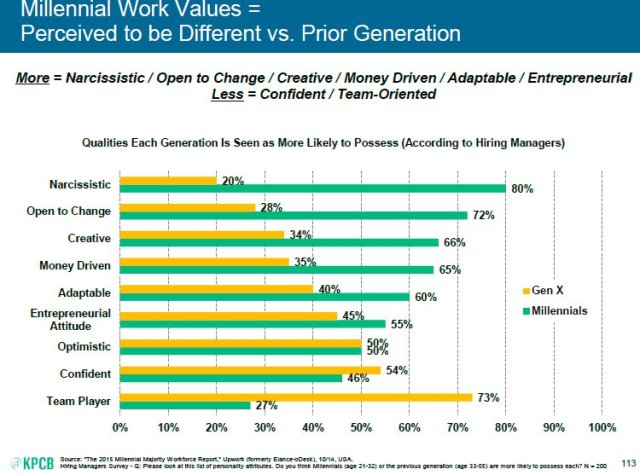Mary Meeker’s big presentations on internet trends are always useful, and her new one is no exception. She addresses hardware, software, networks, along with changes to human behaviors in using new and mature technologies.
I strongly recommend reading through the whole thing.
Notes for education after the embed:
What does this mean for education?
Let me pull out several interesting tidbits.
1. Technology
New chat clients: Meekers makes a case that this (Snapchat, Wechat, WhatsApp, KakaoTalk, etc) is a rapidly rising thing, a “trend [that] continues to play out globally…” Key elements include context, identity, context-persistent conversation. Moreover, more ambitiously, “mobile messaging leaders may evolve into central communications hubs”.
Check out who’s in this list of leading apps:
Video: continues to grow, including on Facebook and new platforms, like chat clients and Twitchy.
Mobile continues to take over the world. Plenty of educational implications, as I’ve been saying since 2000.
However, there are issues with Meeker’s analysis. It depends heavily on urban core behavior, and doesn’t address the very sad status of American cell phone instructure.
2. Culture and behavior
Labor changes: the gig economy continues to build, as Meeker sees “Freelancers = Significant & Growing Portion of Workers”. She estimates the size of that population as “@ 53MM People, 34% of USA Workforce”. As I keep saying, this has major implications for education: how we staff our schools, and for what careers we prepare students.
Meeker has other notes about the labor environment, which are sobering, if not news to my readers: declining union membership, declining employer-supported benefits, rise of service jobs, declining workforce participation, etc.
Millenials versus bosses In several slides Meeker identifies new work attitudes held by Millenials, then sees how their employers view them differently. This probably says more about the older generations than about the young:
(To her credit, Meeker acknowledges the huge impact of the recession on this generation)
For educators, well, the net.generation has been a big deal since the 1990s. Still is.
India rising: Meeker sees India as potentially the next big new internet population, following China. Is this an opportunity for education and technology collaboration between India and other nations, especially Anglophonic and south Asian ones? (cf slides 164ff)
Growth slows but engagement deepens: the number of people getting online keeps growing, but that growth rate is slowing. Perhaps we’re heading towards peak internet. Meanwhile, people already online are spending more time online. Well, more time, more money, more attention, more life. Online learning is moving into a deepening space. Remember when people worried that cyberspace wasn’t real?
Josh Kim reminds us that the majority of internet users, and the supermajority of new netizens, aren’t from the US. Yet another aspect of internationalizing American education.








Pingback: Internet trends: the latest Mary Meeker report | Bryan Alexander